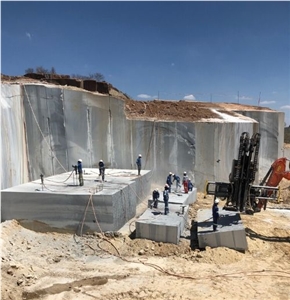Uncovering the Rich Background and Sustainable Practices of Granite Quarrying
As we base on the precipice of uncovering the detailed tapestry of granite quarrying, a journey through time exposes not simply the physical act of drawing out rock yet likewise the cultural and historic value woven right into the really fabric of this technique. From the ancient origins that laid the structure for modern-day quarrying strategies to the lasting practices that are shaping the future of this industry, each chisel mark on granite surfaces tells a tale waiting to be unearthed (granite quarries in south africa). The tradition of granite quarrying stretches much beyond simple extraction; it is a testament to human resourcefulness, resilience, and the enduring attraction of this marvelous rock
Ancient Origins of Granite Quarrying
Going back to old worlds, the technique of quarrying granite has actually been an integral part of human background and architectural development. The earliest evidence of granite quarrying go back to old Egypt, where huge pyramids and elaborate sculptures were crafted from this sturdy stone. The Egyptians used primitive devices to draw out granite blocks from quarries, showcasing the importance of this material in their huge buildings.
Moving on in background, the Greeks also made considerable payments to the quarrying of granite. The Greeks utilized granite in numerous architectural wonders, such as holy places and statuaries, showing their ability in shaping and sculpting this durable stone. The Romans further refined the techniques of quarrying granite, employing advanced tools like chisels and hammers to extract and form granite for their legendary frameworks.
With the centuries, the method of quarrying granite has evolved, with modern innovations boosting effectiveness while preserving the timeless appeal of this all-natural rock - granite quarries in south africa. From ancient civilizations to modern builders, the heritage of granite quarrying remains to shape our globe
Advancement of Quarrying Methods
The advancement of quarrying methods has actually been marked by a continual progression in the direction of greater performance and precision in drawing out granite. Early quarrying strategies included hand-operated labor with standard tools such as knives, hammers, and wedges to extract granite blocks from the earth.
Improvements in computer-controlled equipment and 3D modeling have actually maximized quarrying procedures, leading to marginal ecological influence and enhanced sustainability methods. As the demand for granite continues to rise, the development of quarrying techniques remains essential to meeting industry needs successfully and sustainably.
Social Value of Granite
Granite holds an extensive cultural value across numerous people due to its enduring visibility in architectural work of arts and admired monoliths. The cultural relevance of granite extends past its physical qualities; it embodies strength, stability, and eternity, making it an icon of withstanding heritages and customs.

Sustainable Practices in Quarrying
Among the rich history of granite quarrying and its social relevance lies an expanding focus on sustainable techniques within the market. As environmental recognition and worries regarding source exhaustion have enhanced internationally, the quarrying industry has actually progressively embraced lasting methods to decrease its influence on the environment and bordering communities.

Furthermore, reclamation and rehabilitation of quarry sites post-extraction are integral to sustainable practices. By restoring quarried locations to an all-natural or valuable state, such as developing wild animals environments or leisure areas, quarriers can balance out the environmental footprint of their operations and look at here now add favorably to the regional environment.
Tradition of Granite Quarrying
With a historical backdrop soaked in workmanship and industrial progress, what sustaining influence has granite quarrying left on the landscape of contemporary society? The legacy of granite quarrying goes beyond plain extraction practices; it has actually formed architectural marvels, city landscapes, and social heritage worldwide. The resilient nature of granite has made it a recommended option for monuments, structures, and framework, standing as a testament to the ability and creativity of quarry workers throughout generations.
Furthermore, the economic impact of granite quarrying can not be neglected. The industry remains to offer employment possibility and drive local economic situations in areas where granite extraction is widespread. It has additionally spurred technical improvements in quarrying techniques and tools, resulting in more effective and sustainable methods.
In terms of sustainability, the tradition of granite quarrying consists of efforts to alleviate ecological impacts with recovery tasks and responsible resource monitoring. By stabilizing economic rate of interests with environmental stewardship, the industry strives to guarantee that future generations can proceed to take advantage of this enduring natural deposit.
Final Thought
